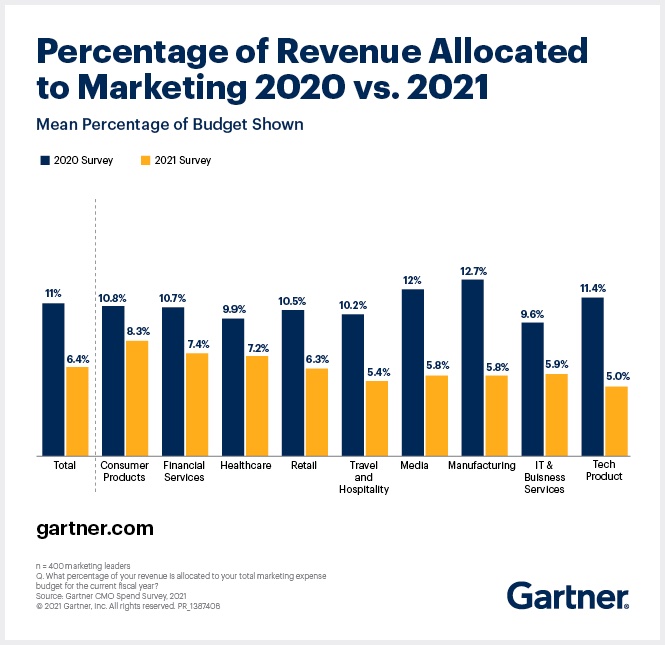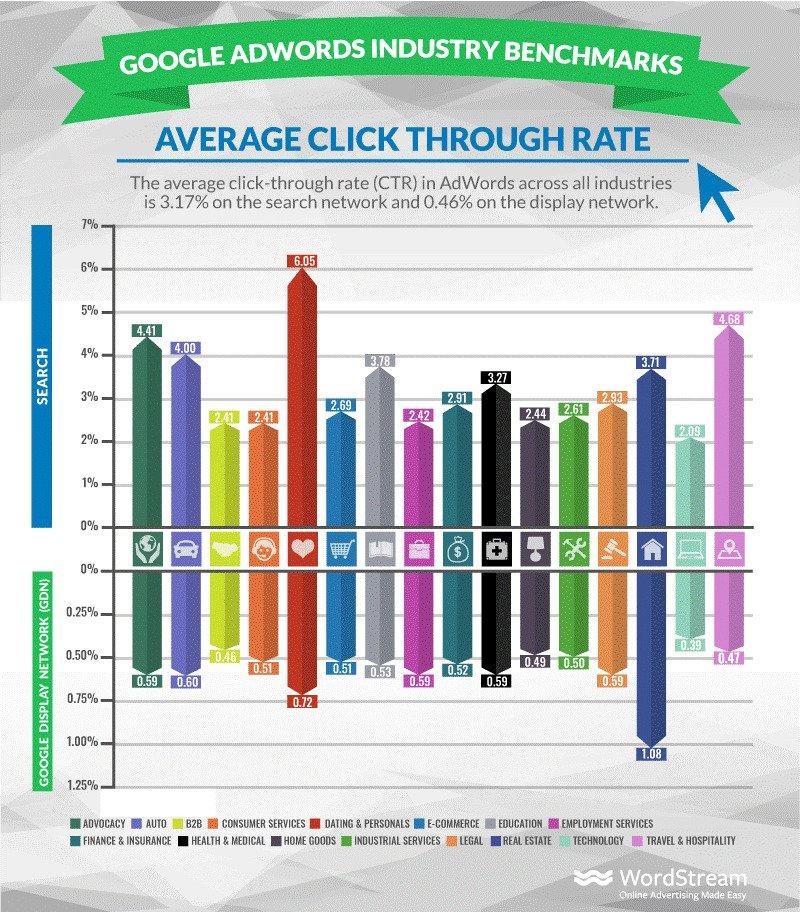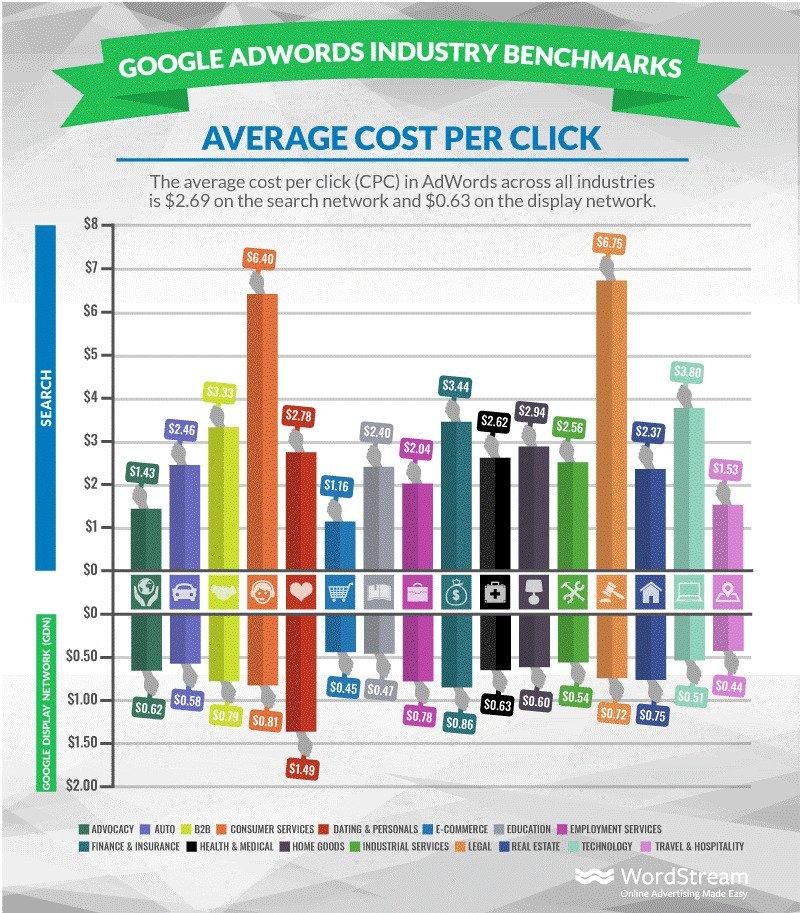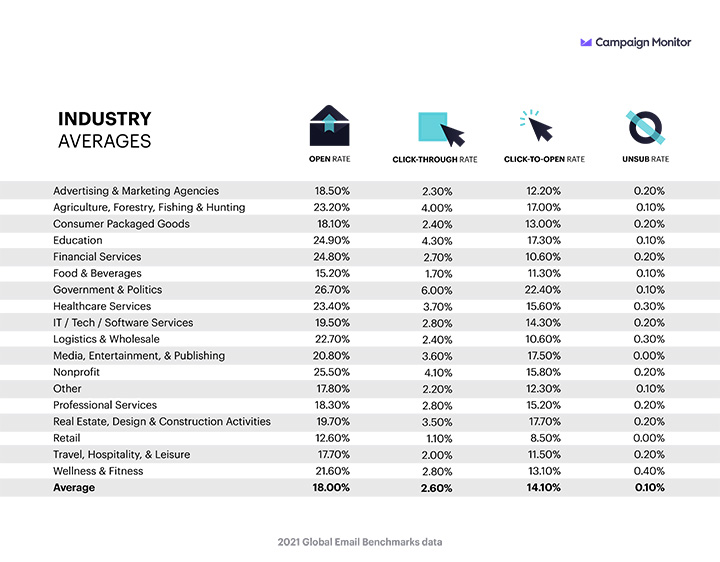“I can see our marketing results are getting better, but are they good?”
It can be challenging to find resources for comparing your business’s results. So today, we’re sharing five. Keep in mind that averages are just that — average — and that performance for an established brand will differ from that of a newbie fighting for awareness. Remember, too, that current averages have gone through a lot lately–the pandemic shifted everything sideways. While benchmarks can only tell part of the story, they can be directionally helpful.
Without further ado, here are five marketing benchmarks you really ought to know:
1. How much do others spend on marketing?

This is the million-dollar question, isn’t it? (Okay, probably not a million dollars…) What percentage of their revenue do others in your industry typically spend on marketing? Find out >
2. How often do people click on Google Ads?

Google Ads for search are often a small business’s first foray into digital marketing because they can drive a higher volume of ready-to-buy prospects than other publishers. So how often do people click on those ads? Find out >
3. How much do other businesses pay for each Google Ads click?

Your Google Ads budget needs to take into account both how much volume you’ll get from the ads and how much each click will cost you. So, how much can you expect to pay? Find out >
💡 WEBSITE INSIGHT: Google Ads gives you a more immediate return on investment, while SEO aims for the long haul. With Google Ads, you can create advertising campaigns almost instantly and start getting targeted traffic. With SEO you need a lot more time (especially for new websites) to get good rankings and traffic, but once you establish good practices, those returns come back to you over and over again.
4. What’s a typical email open rate?

Do you send marketing emails to your customers and prospects? (If you do, check out our tips on how to make email marketing work for your business.)
If you’re sending emails, we know you have lots of benchmark questions: What are good open rates? How many people typically click on links? What is the right time of day to send? How long should the subject line be? Find out >
5. Include a call to action
Whether it’s registering for your event, viewing your video, or clicking through to visit your website, using Facebook’s cost per action (CPA) advertising can help you make sure you’re only paying for the results you seek. But how much does it typically cost to get people to act? Find out >
💡 WEBSITE INSIGHT: Looking for more activity on social media? Remember to engage your customers by inviting them to like your page, and include your preferred social media links as icons on each page of your website to keep the conversation going!





